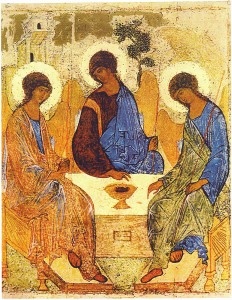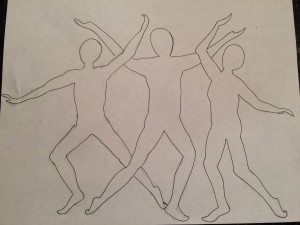“The LORD said to Moses: Write these words;
in accordance with these words I have made a covenant with you and with Israel…
And he wrote on the tablets the words of the covenant, the ten commandments.”
– Exodus 34:27-28
Beloved of God,
Lent is a season of truth-telling. And truth seems to be in short supply these days. Everything, it seems, is up for grabs. Your point of view not getting enough love? Find the right Facebook group, chat room, or online news source, and you’re home free. The data don’t support your perspective? Crunch your own data. The science doesn’t backup your worldview? Enlist some “alternative facts.”
Lent is an antidote to all this. The ashes we wear are a no-holds-barred articulation of human origin and destiny in one sleek sentence: REMEMBER YOU ARE DUST, AND TO DUST YOU SHALL RETURN. In Lent we tell the truth about the way things are with us: We are in bondage, and cannot free ourselves. It is a hard truth; but it’s a good truth, because it disabuses us from any notion that we can get our act together if we only try harder.
During this 500th anniversary year of the Reformation, our worship planning team has us focusing on Luther’s Small Catechism during our 5 Wednesday evenings together, beginning March 8. In his explanation of the 1st Commandment in his Large Catechism, Brother Martin says: “Anything on which your heart relies and depends, I say, that is really your God. The intention of this commandment therefore is to require true faith and confidence of the heart, which fly straight to the one true God and cling to him alone.” If we can’t grasp this 1st command, what chance we’ll honor the others?
The season of Lent reveals truth as paradox: on the one hand, the weakness of our wills and the limits of our abilities to do what God requires; and on the other hand, the depth of God’s love for us in Jesus and the boundless ability of the Holy Spirit to transform our lives. Contemplating this paradox is the journey of Lent.
To help us do this, we’ll see a new artful expression appear, by degrees, on the East wall of our sanctuary during this season. This installation is inspired by 15th century Russian iconographer Andrei Rublev’s depiction of the Holy Trinity. (At right)
Franciscan Richard Rohr notes that icons like this “point beyond themselves, inviting a sense of both the beyond and the communion that exists in our midst. This icon shows the Holy One in the form of Three, eating and drinking, in infinite hospitality and utter enjoyment between themselves. The gaze between the Three shows the deep respect between them as they all share from a common bowl.”
 The opening stanza of Brian Wren’s hymn on the Trinity reads:
The opening stanza of Brian Wren’s hymn on the Trinity reads:
When minds and bodies meet as one and find their true affinity,
we join the dance in God begun and move within the Trinity,
so praise the good that’s seen and done in loving, giving unity,
revealing God, forever One, whose nature is Community.[1]
The central truth the season of Lent reveals is the incessant Voice of the Triune God calling us into relationship—through the Ten Commands; through Jesus’ journey to the cross; through the Font which gave us birth; through the communion of the Table. All of these reveal the passionate longing of the Triune God to share the Divine Feast with us—to teach us the steps of the sacred Dance. This truth is more hopeful than anything the world casts our way. So get your toes a tapping!
With you on the Way,
Pastor Erik




